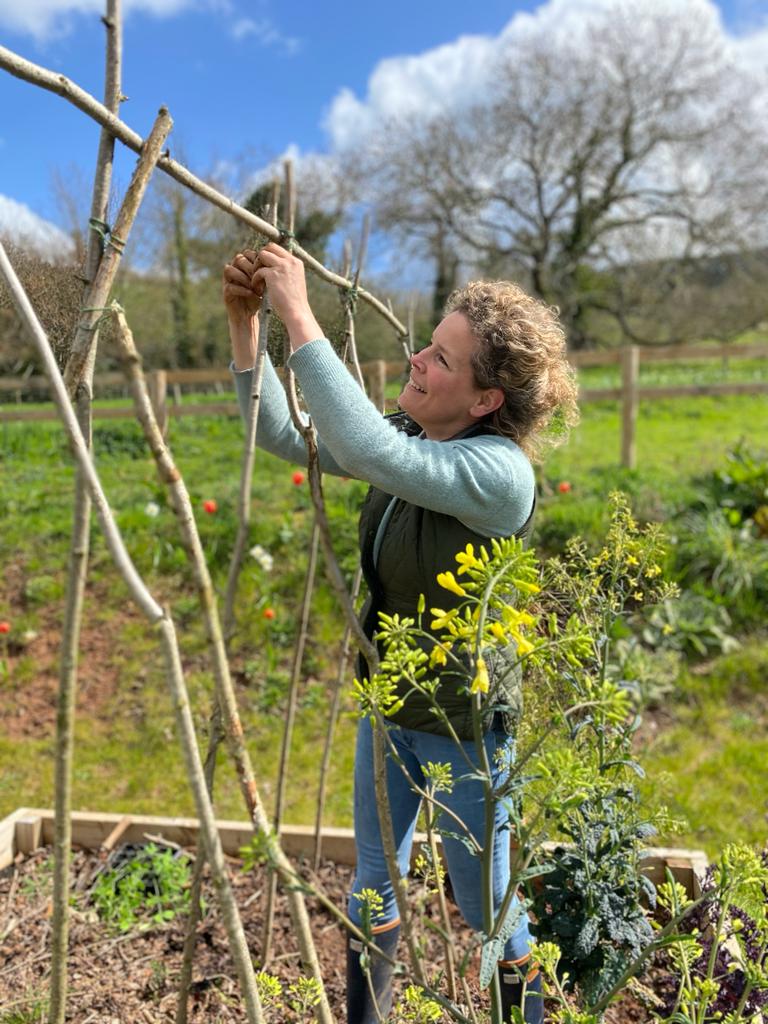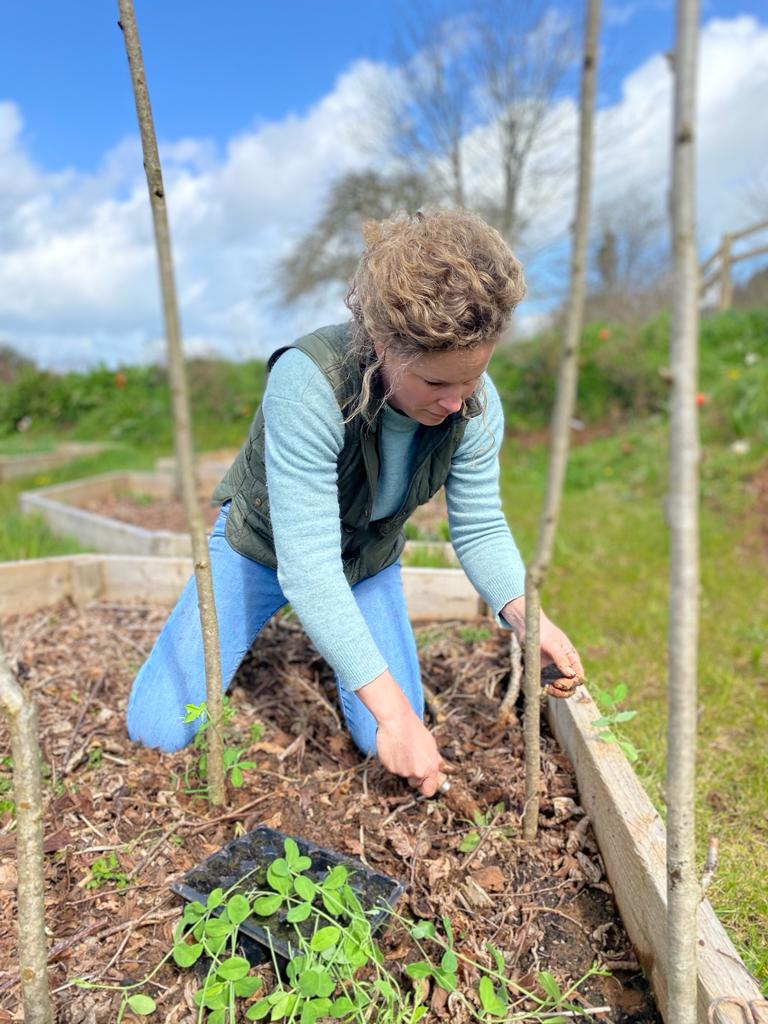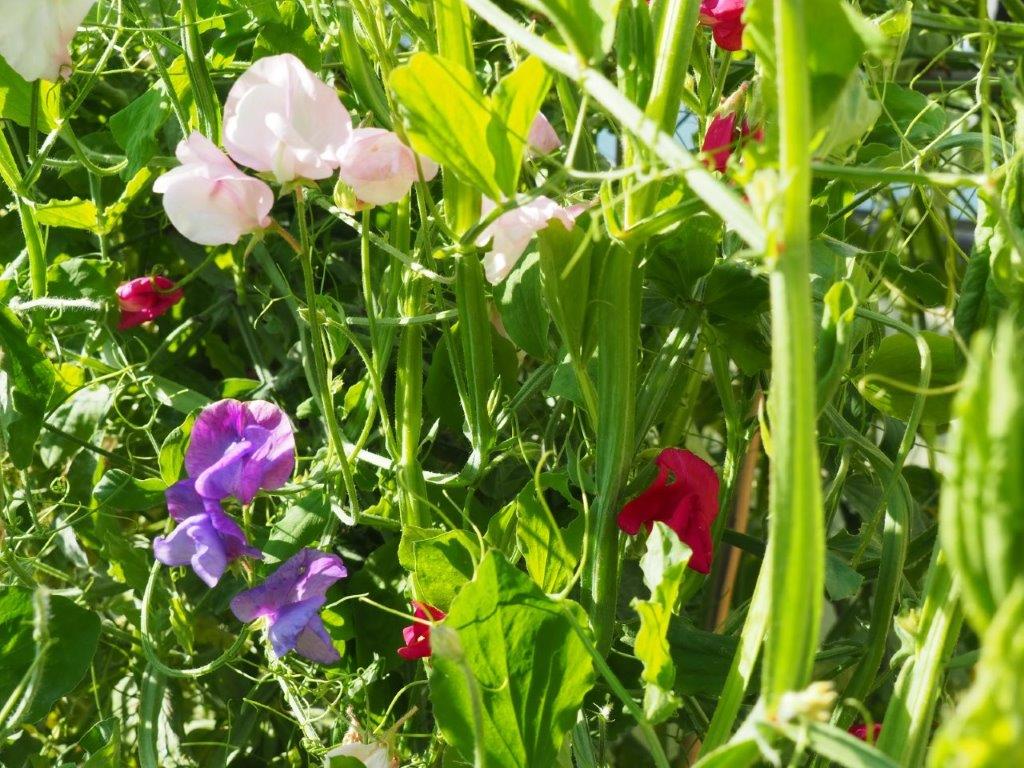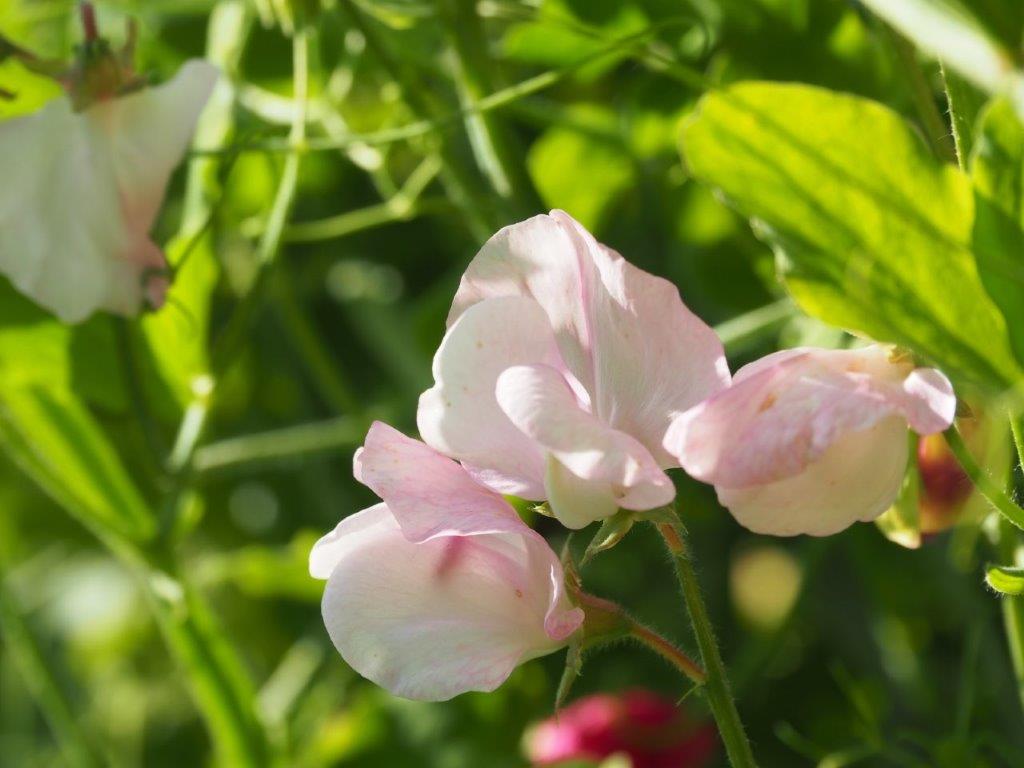Sweet peas or Lathyrus odoratus, are so delicate and lovely, like a gentle breeze on a warm summer’s day. I always make sure to add them to the kitchen garden as their beauty is unmatched and their fragrance is intoxicating.
Growing sweet peas is like nurturing a tiny piece of beauty. Plant the seed with care, watching it grow and blossom into a symphony of colours in shades of pinks, purples, and blues. The beauty of the sweet pea is only surpassed by its fragrance. As I walk through my vegetable garden, the sweet scent of the sweet pea fills the air.
To grow sweet peas, you must give them a sunny spot with well-drained soil, water them regularly, and provide them with support as they grow. And when the sweet peas bloom, you’ll be rewarded with a garden full of romance.
Organic Sweet peas are 100% pesticide-free annual flowers, are popular in gardens and for cut flower arrangements. Great for bees and pollinators too! They are members of the legume family and produce delicate, butterfly-like flowers that come in a wide range of colours including pink, purple, blue, white, and red.


Some Extra Tips to Successfully Grow Sweet Peas
Sweet pea seeds have a relatively high germination rate, but there are ways to improve it. One method is to carefully nick the seed coat with a knife, taking care to avoid damaging the “eye” area. When sowing, you have a few options: you can sow seeds in a standard propagator or put three seeds in 9cm pots or use root trainers. Be sure to use a high-quality organic seed and cutting compost or a peat-free compost, and place the seeds in a cold frame or greenhouse for optimal growth.
Choose a sunny spot when planting or transferring them outside: Sweet peas prefer a location that gets at least six hours of sun each day. They can tolerate some light shade though.
Prepare the soil: Sweet peas prefer a well-draining soil that is rich in organic matter. Prepare the soil by adding home made organic compost, leaf mould or well-rotted manure.
Start pre-sowing seeds indoors: Sweet peas can be started indoors from February. Soak the seeds in water overnight to help with germination. Plant the seeds in individual pots and keep them in a sunny location.
Transplant seedlings: After the last frost, transplant the seedlings outside. Space them about 6 inches apart and provide support for them to climb on. We used natural stakes from our own hazel trees and tied them together with Twool garden twine made of 100% Dartmoor wool.
Water regularly: Sweet peas need consistent moisture to thrive. Water them deeply once or twice a week, depending on weather conditions. Mulching to protect your soil is always a good idea.
Fertilize: Apply a natural and organic fertilizer like manure, leaf mould or rich compost every few weeks to encourage healthy growth and flowering.
Deadhead regularly: To encourage more blooms, deadhead faded flowers by pinching them off. This will also help prevent the plant from going to seed too soon.
With proper care, sweet peas will bloom from mid-spring until early summer. They are a beautiful addition to any garden, big or small, but especially to a Modern Cottage Garden.
Sweet peas can be enjoyed indoors as well in a vase or bouquet!



